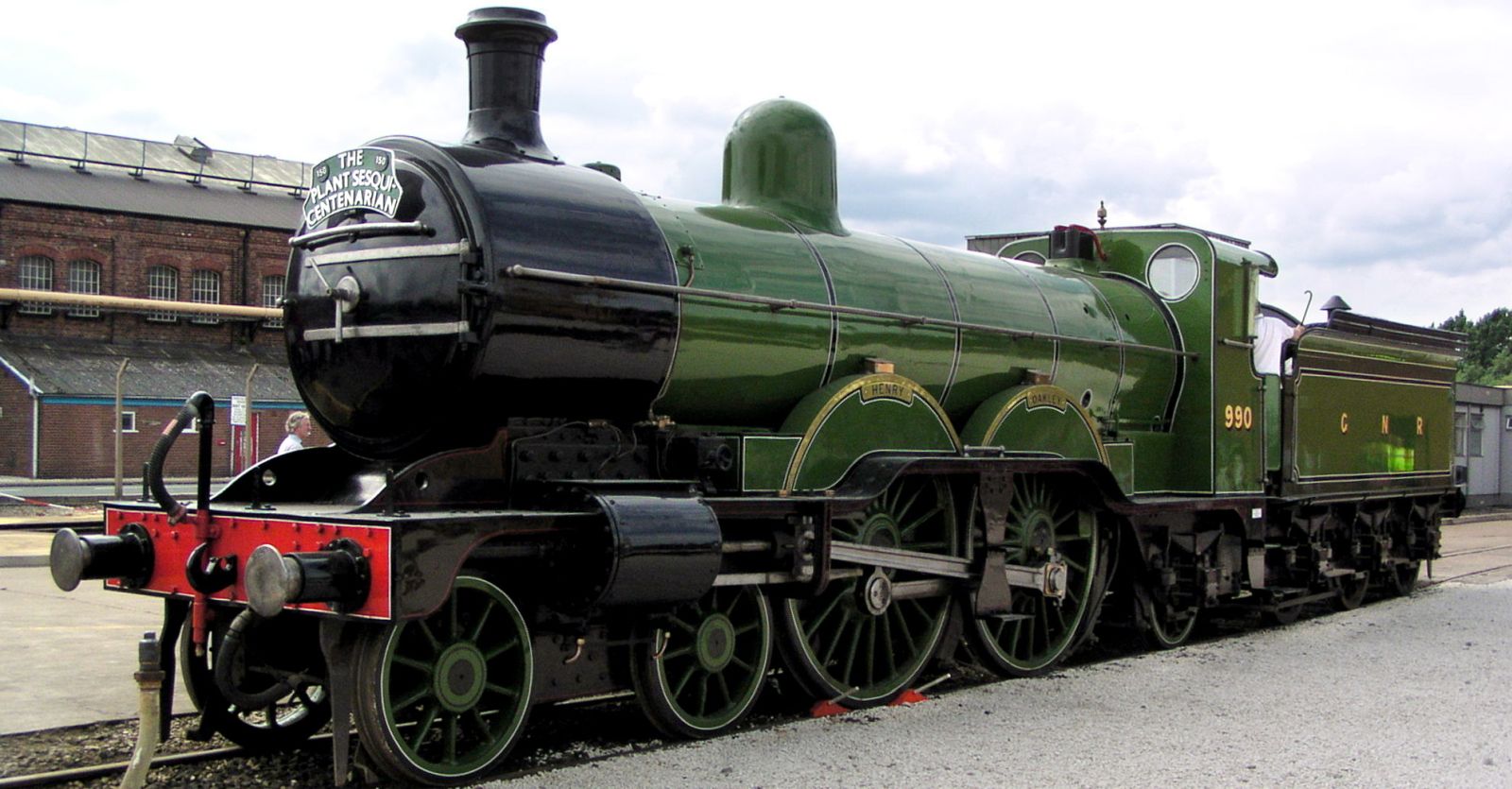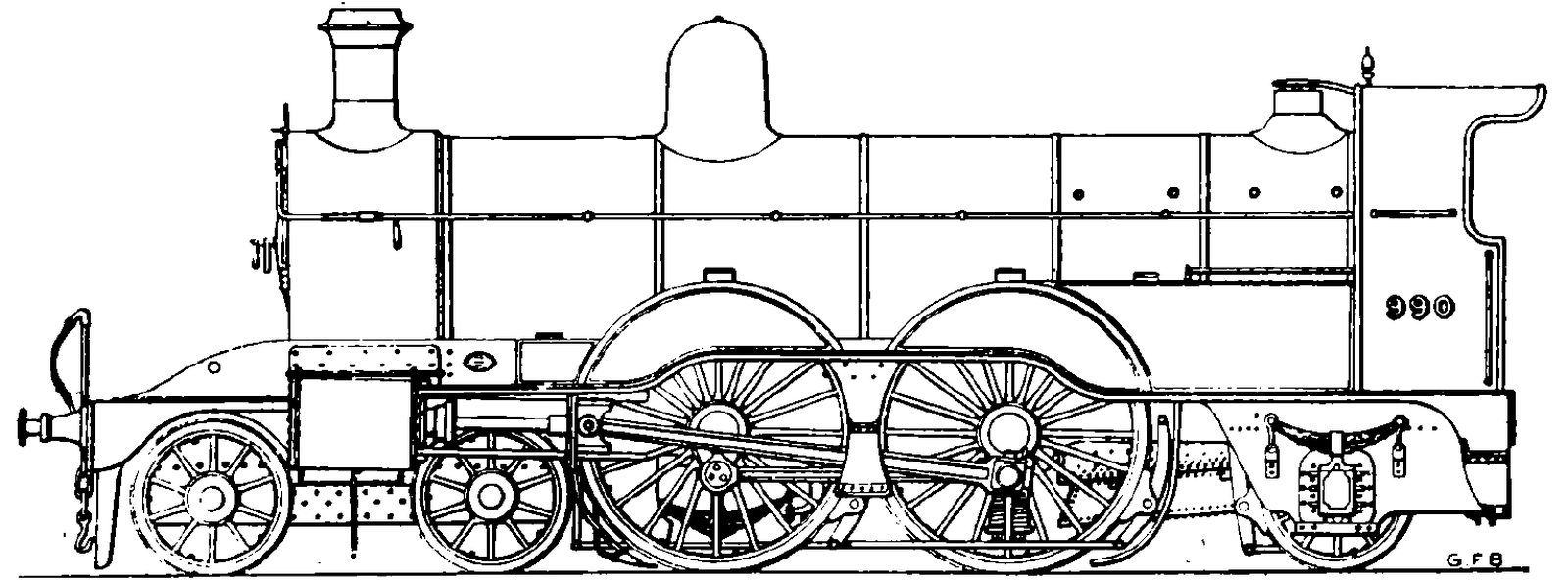Shortly before the turn of the century, Henry Ivatt had the task of developing a new locomotive for the increasing loads of the most important express trains. He had to measure himself against the singles from his predecessor Patrick Stirling, who were still considered excellent and very fast, but no longer powerful enough. Here, for the first time in Great Britain, the wheel arrangement 4-4-2 was used, which originally came from the USA and was known there as “Atlantic”. The difference was that the Atlantic was developed in the US from the 4-4-0 “American” to allow for a larger firebox and smoother running, while in the UK it was a 4-2-2 “Single” with an extra coupled axle.

No. 990 “Henry Oakley” at the Doncaster Works Open Day, July 2003
Our Phellap 
The class also represented a departure from British tradition in other respects, most notably with its externally mounted cylinders. The class was initially only named after the first machine built with the number 990 and later got the designation C1. To distinguish them from the larger boiler design of 1902, the locomotives are generally known simply as “C1 (small boiler)” or “Small Atlantics”. Because of the American influence, they were also nicknamed “Klondykes” after the Klondike Gold Rush. A single example, number 271, was built in 1902 with four small simple acting cylinders.

Schematic drawing
Locomotive Magazine, October 1900
A total of 22 pieces were made. The locomotives easily reached 90 mph, which proved difficult in everyday use on routes such as between London and Doncaster. At some speeds, it was often found that the cylinders were too small to implement the boiler's output. This led to unfavorable valve gear settings during operation, which led to high steam consumption.
In 1909, number 988 was the only one equipped with a superheater according to the Schmidt patent. The boiler pressure was reduced from 175 to 160 psi and in return the cylinder diameter was increased from 19 to 20 inches. From 1914 all other machines were converted with the Robinson superheater. From 1923, the machines were listed as class C2 by the LNER. The decommissioning began as early as 1935 and lasted until 1946. Today only number 990, which was built first, still exists, which bears the name “Henry Oakley” after the former managing director of the Great Northern.